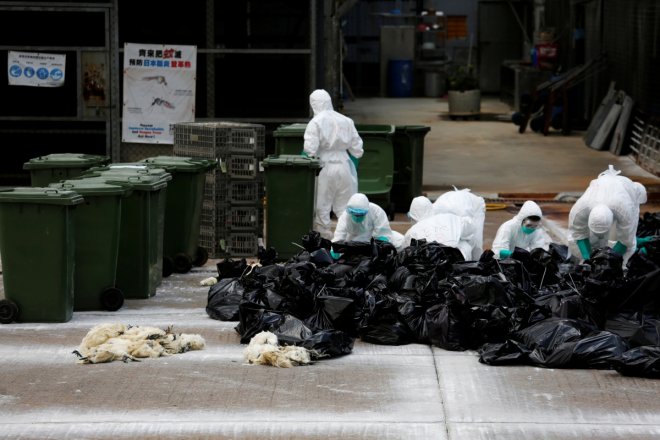
Shanghai and Hong Kong each confirmed a new human case of infection by the H7N9 strain of avian influenza on Friday.
Shanghai's health authority said the man, who has been diagnosed with H7N9 bird flu strain is being treated in a hospital, Xinhua reported. On the other hand, Hong Kong confirmed its second case of this season after an elderly man died of the virus on Sunday.
The Hong Kong government said in a statement that a 70-year-old man tested positive for the H7N9 strain of the virus. Earlier in December, he had travelled to the neighbouring Chinese cities of Shenzhen and Zhongshan.
According to reports, the man had come across mobile stalls, which were selling live poultry in Zhongshan. But the actual source of infection is still not clear and the authorities were still investigating the source.
The patient has already been hospitalized in stable condition. Authorities also said that people, who are in close contact with the man, have also been kept under medical surveillance.
The statement further added that bird flu cases were "expected to increase in winter based on its seasonal pattern". Bird flu is most likely to strike in winter and spring.
Earlier this month, Shanghai, the largest city of China with more than 24 million residents, has also already reported one human case of H7N9 infection.
The virus was first reported in humans in Hong Kong in 1997. Reports say six people had died and subsequent outbreaks have killed hundreds more worldwide.
In recent years, farmers have increased cleaning regimes, animal detention techniques, and built roofs to cover hen pens, among other steps, to prevent the disease.









